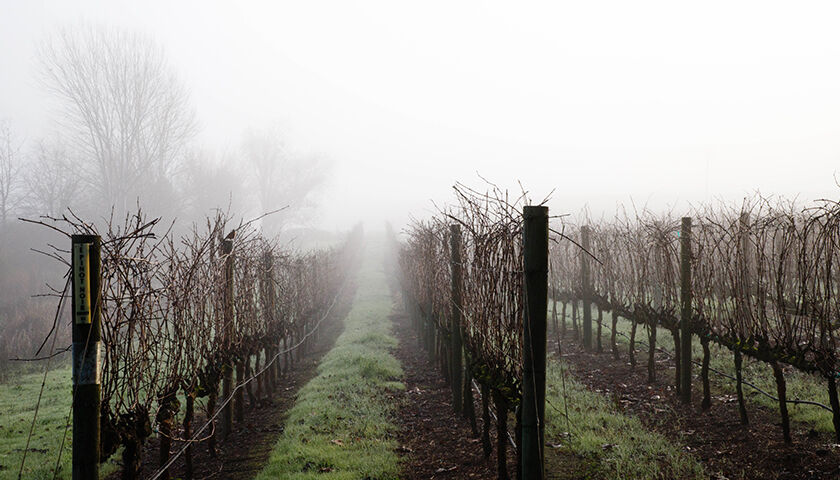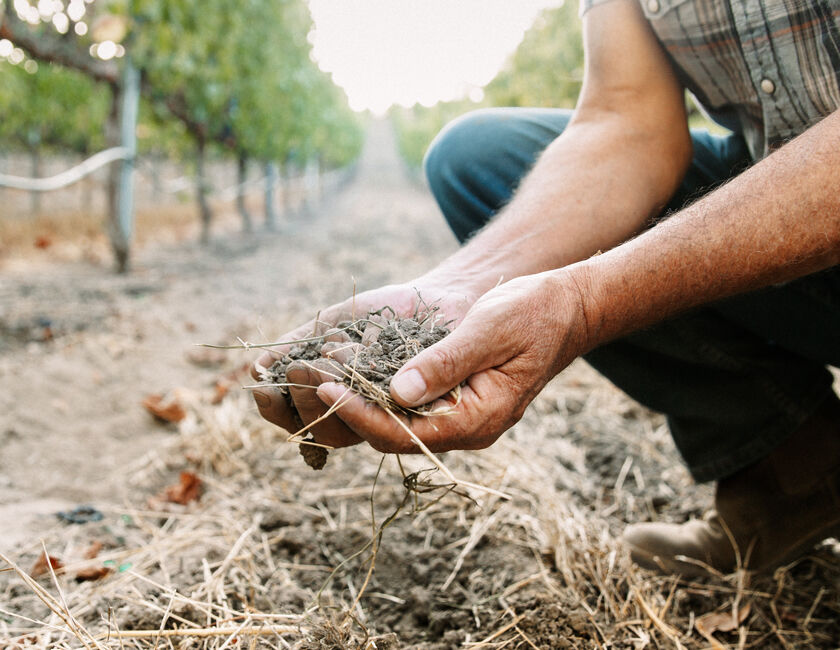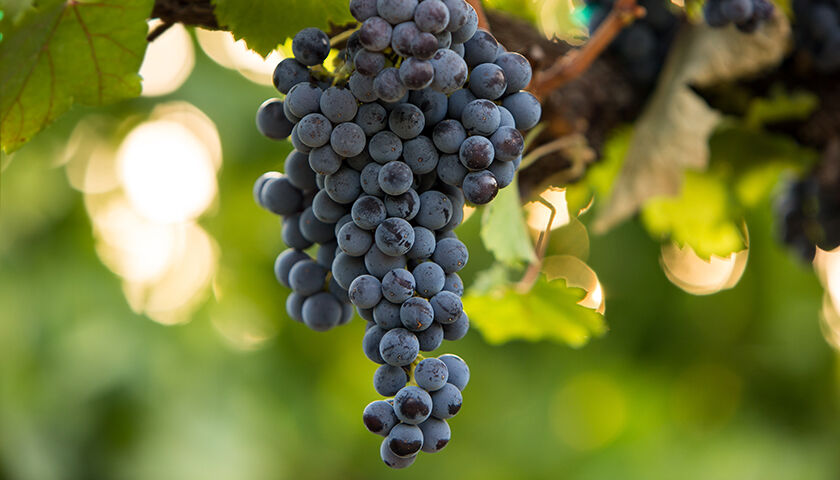Grace Benoist Ranch
The Grace Benoist Ranch, home to the Etude Estate Vineyards, lies in the Coast Ranges of California – young mountains thrust up by forces of colliding crustal plates. These forces are also the origin of the San Andreas Fault System and its parallel components, including the Rogers Creek Fault that runs a few hundred feet west of the Ranch. The property itself is cut by at least one fault – the Bennett Valley Fault – which our “Temblor” Vineyard pays tribute to.

Climate
Grace Benoist is located in a cool growing region. The fog and maritime breezes off the Pacific Ocean and San Pablo Bay keep daytime temperatures low, creating the perfect environment for growing Pinot Noir and Chardonnay. The Grace Benoist Ranch is heavily influenced by the Petaluma Gap which is a wind gap named after a coastal mountain opening that stretches east from the Pacific through the town of Petaluma and then blows south to San Pablo Bay.

Soils
One of the reasons the Etude Estate Vineyards at Grace Benoist Ranch are so unique is due to the various soil profiles found across the Ranch. Soil profiles, which take tens of thousands to hundreds of thousands of years to fully develop, typically comprise several layers. Within the ranch there are three distinct types:
- The Petaluma Formation – dated to be older than 8.2 million years, the Petaluma Formation is the oldest geologic unit present in the vineyards. The Petaluma Formation consists of coarse sand and gravel deposited in a system of rivers, lakes and streams. In the Etude Estate Vineyards it contains petrified wood and is known elsewhere to contain the remains of land mammals.
- The Sonoma Volcanics – the Sonoma Volicanics, formed around 8.2 and 2.6 million years ago, overlies the Petaluma Formation in the vineyards. The hills and mountains that surround and overlook the Estate Vineyards are composed almost entirely of rocks of the Sonoma Volcanics.
- QTU – The unit presently known as Quaternary Unkown or QTU is the youngest bedrock unit in Grace Benoist. It is comprised of varying concentrations of volcanic pebbles, cobbles and boulders.

Varietals and Clones
Vineyards are trained to cordon on a vertical shoot positioned trellis and are planted to the following varieties and clones:
- Pinot Noir – 158 acres of Pinot Noir (including 6 acres of Heirloom selections): Dijon Clones 115, 114, 113, 777, 667, 828, Pommard 5 and Martini 13, with rootstocks to match the major eight soil types and different climatic conditions
- Chardonnay – 6 acres of Chardonnay: Clones 17, 124, 277, 809, 548, Rued, Wente, 76, 96 and some Heirloom selections
- Pinot Gris – 14 acres of Pinot Gris: Alsatian Colmar clonal selections

